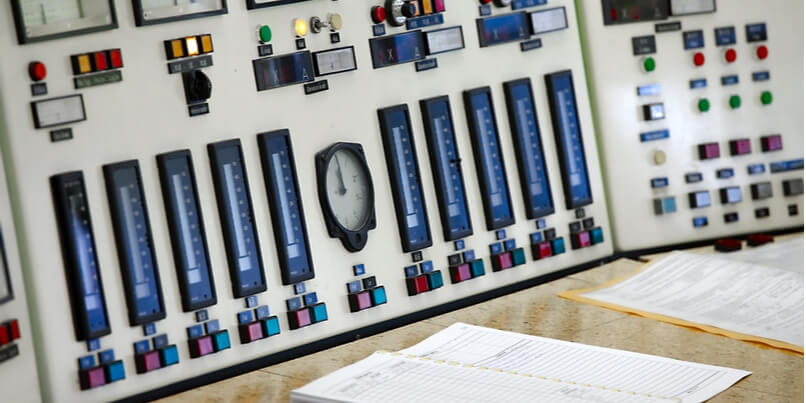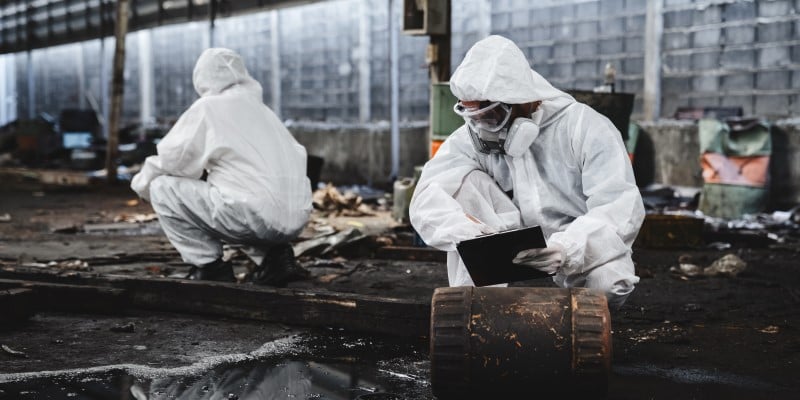 With the increasing use of radioisotopes within educational institutions, industrial facilities and healthcare environments, there also comes the need to maintain a rigorous and robust approach to radiological safety.
With the increasing use of radioisotopes within educational institutions, industrial facilities and healthcare environments, there also comes the need to maintain a rigorous and robust approach to radiological safety.
Protecting people and the environment from the effects of radioactive materials relies on two core practices - implementing appropriate radiological safety measures to prevent exposure to radiation and ensuring that there are robust security systems in place to prevent radioactive materials being misappropriated for malicious use.
The importance of maintaining an integrated and cohesive approach to the management of radioactive materials provided the impetus for a two-week virtual workshop hosted by the International Atomic Energy Association (IAEA) in April 2021.
The workshop was the first of its kind to merge the practices of nuclear safety and nuclear security in one unified approach.
Among the wide range of events on offer was a series of simulated tabletop exercises which demonstrated how the use of an integrated management system (IMS) can support “a safety and security culture” in radiological environments.
As the IAEA’s Senior Radiation Safety Specialist Manual Recio explained, it is important to ensure that people and systems can combine in a harmonious way.
Said Recio: “When you apply security measures – unless you are careful – you may prevent safety actions, and vice versa. It is important to ensure a decision does not have a negative impact on either safety or security.”
Bolstering radiation safety and security
When considering radiological safety and security in the workplace, it is important that all personnel understand their roles and responsibilities in respect to the handling, storage and disposal of radiological materials and that they are trained in how to respond in the event of a radiation incident.
Core priorities will include:
- The carrying out of contamination monitoring before and after any work involving the use of ionising radiation
- Ensuring radioactive substances are only ever removed from controlled or supervised areas in closed uncontaminated containers
- Ensuring that radionuclides that emit penetrating radiation are adequately shielded
- Minimising the time spent handling radioactive substances
- In the case of an emergency, following all contingency procedures to ensure contamination is contained without delay
From time to time it may also be necessary to decommission a laboratory which will require comprehensive contamination monitoring to ensure that all working surfaces, floors and equipment are free from contamination.
Measuring radiation contamination
The ThermoFisher Mini 900 EP15 contamination and radiation monitor is a widely used tool of choice in a wide range of radiological workplace settings.
The device’s varying configurations enable the monitoring of high level dose rates, low level dose rates and the measuring of radiation from X-ray apparatus. Each unit is supplied with a comprehensive manual that details tables and curves of response to different types of radiation.
In order to successfully complete contamination monitoring, personnel need to be confident in selecting the appropriate tool for the job, ensuring it is fit for purpose (checking its battery status, that it has been recently calibrated etc) and making sense of the readings they obtain.
What is also important that they are provided with the opportunity to build proficiency in the handling of their detectors, through exposure to scenarios that are as life-like as possible.
The value of radiological simulators
In situations where the use of live radioactive sources isn’t practical or feasible in a training context, the use of a radiological simulator in combination with a safe simulation source can serve as a highly effective training tool.
By utilising a simulator-based approach to training, personnel are able to safely experience all of the logistical challenges and decision-making processes that are essential aspects of radiation practice.
When training for contamination monitoring, Argon Electronics’ simulator equivalent of the ThermoFisher Mini 900 - the Radsim DS3 - offers a safe, simple and environmentally friendly way for radiation personnel to develop their skills.
A key feature of the Radsim DS3 is the use of photon-based fluorescent simulation technology which responds to simulated radioactive liquids and powders to simulate contamination of a wide variety of surfaces including protective gloves and food.
Commonly used dyes, food additives and cosmetic bases provide the basis for the radiological simulants which ensures safety is always maintained.
The simulator can be configured to respond to the simulants as Alpha, Beta or Alpha Beta and it is also possible to modify the detection range in order to demonstrate the importance of correct probe use.
The Radsim DS3 is especially suited to academic establishments, medical environments, nuclear facilities and first response training where it can be used to conduct a wide range of radiological and CBRN-based exercises.
If you would like to learn more about the integration of simulator training tools within your existing radiological instruction programmes please contact a member of the Argon team to arrange an online demonstration.







